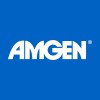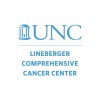
Phase II Study of Salvage Radiation Treatment After B-cell Maturation Antigen Chimeric Antigen Receptor...
Multiple MyelomaPlasma Cell Neoplasm1 moreThis study is a Phase II study to determine the preliminary safety and efficacy of salvage radiation treatment after BCMA CAR-T therapy in subjects with RRMM. The study population will consist of subjects with RRMM previously treated with SOC BCMA CAR-T cell therapy with active disease on the D30+ PET or other imaging scan after CAR-T infusion. Patients who are planned for salvage chemotherapy less than 14 days after completion of radiation treatment will be excluded. Radiation treatment will be to bony or soft tissue plasmacytomas in up to five radiation treatment fields to 10-20Gy (or equivalent dose in 2Gy fractions of 10-21Gy). Final dose, target, and technique are per treating radiation physician discretion within these guidelines. Thirty patients will be enrolled. The co-primary endpoints are objective response rate (ORR) at 6 months and duration of response (DOR) among responders.

Mecapegfilgrastim With Chemotherapy for Peripheral Blood Stem Cell Mobilization in MM and Lymphoma...
Multiple MyelomaLymphomaThis is a multicenter prospective study to evaluate the efficacy and safety of chemotherapy combined with a single dose of subcutaneous(SC) injection mecapegfilgrastim on day 2 or day 5 after chemotherapy for autologous peripheral blood stem cell (PBSC) mobilization in patients with multiple myeloma or lymphoma.

AMG 176 First in Human Trial in Participants With Relapsed or Refractory Multiple Myeloma and Participants...
Relapsed or Refractory Multiple MyelomaRelapsed or Refractory Acute Myeloid LeukemiaAt least one dose level of AMG 176 will achieve acceptable safety and tolerability in participants with relapsed or refractory multiple myeloma and participants with relapsed or refractory acute myeloid leukemia

Study of ISB 1342, a CD38/CD3 Bispecific Antibody, in Subjects With Previously Treated Multiple...
Relapsed/Refractory Multiple MyelomaThe purpose of this study is to assess safety, efficacy, pharmacokinetic (PK)/pharmacodynamic (PD), and immunogenicity with ISB 1342 in subjects with relapsed/refractory multiple myeloma.

Tumor-Associated Antigen-Specific Cytotoxic T-Lymphocytes for Multiple Myeloma
Multiple MyelomaThis study is for patients that have a cancer called Multiple Myeloma, monoclonal gammopathy of undetermined significance (MGUS) or smoldering myeloma (SM). MGUS and SM have tumor cells that possess nearly identical properties to the cancer cells seen in patients with multiple myeloma. The investigators would like to target proteins that are expressed by these cells using the patient's own immune cells known as T lymphocytes.This research study uses special immune system cells called tumor associated antigen (TAA)-specific cytotoxic T lymphocytes (CTLs), a new experimental therapy. The proteins that investigators are targeting in this study are called tumor associated antigens (TAAs). These are cell proteins that are specific to the cancer cell.They either do not show or show up in low quantities on normal human cells. In this study the investigators are targeting five common TAAs called NY-ESO-1, MAGEA4, PRAME, Survivin and SSX. On a different protocol, patients have been treated and so far this treatment has shown to be safe. Investigators now want to try this treatment in patients with multiple myeloma or if the investigators can arrest the progression of the patient's condition condition (described above) to multiple myeloma. These TAA-specific CTLs are an investigational product not approved by the Food and Drug Administration. The purpose of this study is to find the largest safe dose of TAA-specific CTLs, to learn what the side effects are, and to see whether this therapy might help patients with multiple myeloma monoclonal gammopathy of undetermined significance (MGUS) or smoldering myeloma (SM) .

Study of ATLCAR.CD138 Cells for Relapsed/Refractory Multiple Myeloma
Multiple MyelomaImmune System DiseasesThe body has different ways of fighting infection and disease. No single way seems perfect for fighting cancer. This research study combines two different ways of fighting disease: antibodies and T cells. Antibodies are proteins that protect the body from disease caused by bacteria or toxic substances. Antibodies work by binding those bacteria or substances, which stops them from growing and causing bad effects. T cells, also called T lymphocytes, are special infection-fighting blood cells that can kill other cells, including tumor cells or cells that are infected. Both antibodies and T cells have been used to treat subjects with cancers. They both have shown promise, but neither alone has been sufficient to cure most subjects. This study is designed to combine both T cells and antibodies to create a more effective treatment. The treatment that is being researched is called autologous T lymphocyte chimeric antigen receptor cells targeted against the CD138 antigen (CAR138 T cells). In previous studies, it has been shown that a new gene can be put into T cells that will increase their ability to recognize and kill cancer cells. A gene is a unit of DNA. Genes make up the chemical structure carrying the subject's genetic information that may determine human characteristics (i.e., eye color, height and sex). The new gene that is put in the T cells in this study makes a piece of an antibody called anti-CD138. This antibody floats around in the blood and can detect and stick to cancer cells called multiple myeloma cells because they have a substance on the outside of the cells called CD138. Anti-CD138 antibodies have been used to treat people with multiple myeloma, but have not been strong enough to cure most subjects. For this study, the anti-CD138 antibody has been changed so that instead of floating free in the blood part of it is now joined to the T cells. Only the part of the antibody that sticks to the multiple myeloma cells is attached to the T cells instead of the entire antibody. When an antibody is joined to a T cell in this way it is called a chimeric receptor. These CD138 chimeric (combination) receptor-activated T cells seem to kill some of the tumor, but they do not last very long in the body and so their chances of fighting the cancer are unknown.

Carfilzomib Based Chemotherapy Mobilization for Autologous Stem Cell Transplants in Multiple Myeloma...
Multiple MyelomaThis phase I study utilizes a 3+3 design with escalating cohorts of Carfilzomib at 20mg/m2, 27mg/m2, 36mg/m2, 45mg/m2, 56mg/m2, and 70mg/m2 to be administered concomitantly with Cyclophosphamide 2 gm/m2, Dexamethasone and Granulocyte colony-stimulating factor (G-CSF)

Daratumumab, Bortezomib, and Dexamethasone Followed by Daratumumab, Ixazomib, and Dexamethasone...
Recurrent Plasma Cell MyelomaRefractory Plasma Cell MyelomaThis phase II trial studies how well daratumumab, bortezomib, and dexamethasone followed by daratumumab, ixazomib, and dexamethasone in treating patients with multiple myeloma that has come back (relapsed) or does not response to treatment (refractory). Immunotherapy with monoclonal antibodies, such as daratumumab, may help the body's immune system attack the cancer, and may interfere with the ability of tumor cells to grow and spread. Drugs used in chemotherapy, such as dexamethasone, work in different ways to stop the growth of cancer cells, either by killing the cells, by stopping them from dividing, or by stopping them from spreading. Bortezomib and ixazomib may stop the growth of cancer cells by blocking some of the enzymes needed for cell growth. Giving daratumumab, bortezomib, and dexamethasone followed by daratumumab, ixazomib, and dexamethasone may work better and help to control cancer in patients with multiple myeloma.

Myeloma XIV: Frailty-adjusted Therapy in Transplant Non-Eligible Patients With Newly Diagnosed Multiple...
Multiple MyelomaTrial Title: FiTNEss (UK-MRA Myeloma XIV) - Frailty-adjusted therapy in Transplant Non-Eligible patients with newly diagnosed Multiple Myeloma Overview: A phase III, multi-centre, randomised controlled trial to compare standard (reactive) and frailty-adjusted (adaptive) induction therapy delivery with the novel triplet ixazomib, lenalidomide and dexamethasone (IRD), and to compare maintenance lenalidomide (R) to lenalidomide plus ixazomib (R+I) in patients with newly diagnosed multiple myeloma not suitable for a stem cell transplant. All participants receive induction treatment with ixazomib, lenalidomide and dexamethasone and are randomised on a 1:1 basis at trial entry to the use of frailty score-adjusted up-front dose reductions vs. standard up-front dosing followed by toxicity dependent reactive dose-modifications during therapy. Following 12 cycles of induction treatment participants alive and progression-free undergo a second randomisation on a 1:1 basis to maintenance treatment with lenalidomide plus placebo versus lenalidomide plus ixazomib. Participants and their treating physicians will be blinded to maintenance allocation. Participant population: Newly diagnosed as having Multiple Myeloma (MM) according to the updated IMWG diagnostic criteria 2014 (see Appendix 1 for criteria) Not eligible for stem cell transplant Aged at least 18 years Able to provide written informed consent Number of participants: 740 participants will be entered into the trial at Randomisation 1 (R1), with 478 participants at Randomisation 2 (R2). Objectives: The primary objectives of this study are to determine: Early treatment cessation (within 60 days of randomisation) for standard versus frailty-adjusted up-front dosing Progression-free survival (PFS, from maintenance randomisation) for lenalidomide + placebo (R) versus lenalidomide + ixazomib (R+I) The secondary objectives of this study are to assess progression-free survival (PFS) for standard versus frailty-adjusted up-front dosing reductions, time to progression, time to 2nd PFS event (PFS2), overall survival (OS), survival after progression, deaths within 12 months of R1, overall response rate (ORR), attainment of ≥VGPR, attainment of MRD negativity, duration of response, time to improved response, time to next treatment, treatment compliance and total amount of therapy delivered, toxicity & safety including the incidence of SPMs, Quality of Life (QoL), cost effectiveness of standard versus frailty-adjusted up-front dosing of IRD and cost-effectiveness of R + I versus R. Exploratory objectives are prospective validation of a novel frailty risk score (UK-MRA Myeloma Risk Profile - MRP), usefulness of Karnofsky Performance Status (PS), and association of molecular subgroups with response, PFS and OS.

Platform Study of Belantamab Mafodotin as Monotherapy and in Combination With Anti-cancer Treatments...
Multiple MyelomaB-cell maturation antigen (BCMA) is a target present on tumor cells in participants with multiple myeloma. Belantamab mafodotin (GSK2857916); is an antibody-drug conjugate (ADC) containing humanized anti-BCMA monoclonal antibody (mAb). This is a phase I/II, randomized, open-label, platform study designed to evaluate the effects of belantamab mafodotin in combination with other anti-cancer drugs in participants with relapsed/refractory multiple myeloma. The Platform design incorporates a single master protocol, where multiple treatment combinations, as sub-studies, will be evaluated simultaneously.
